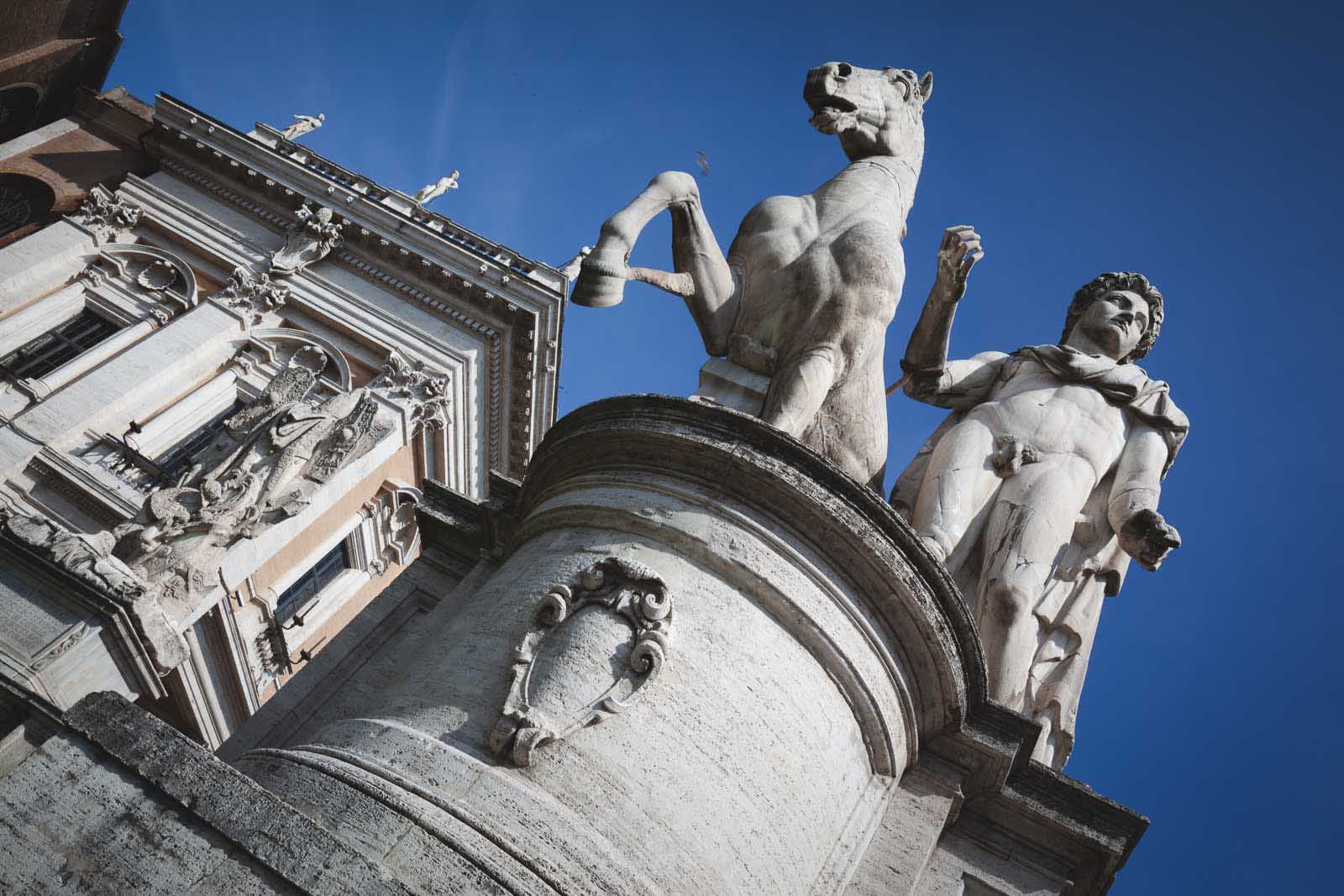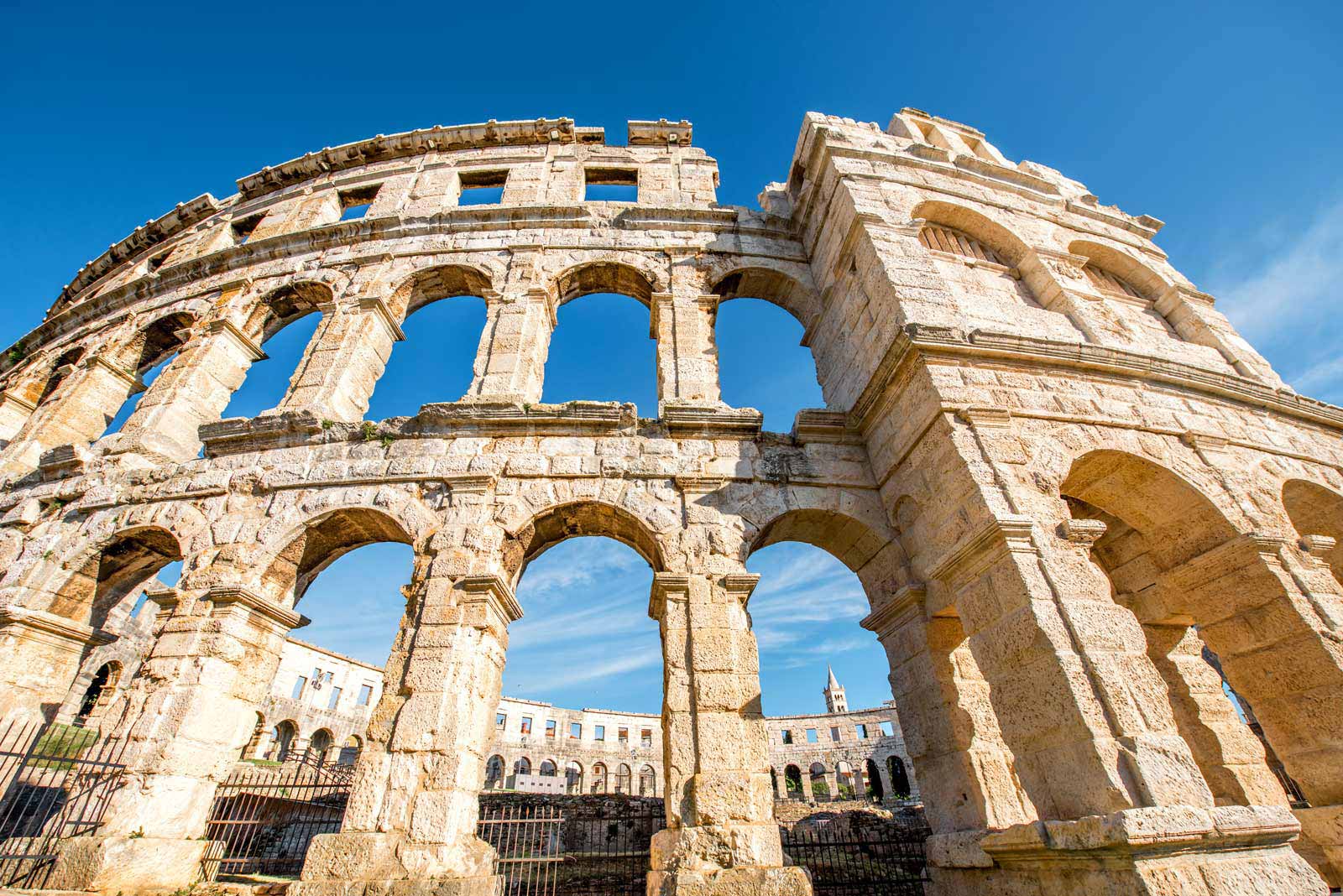Table of Contents
- 1. Colosseum
- 2. Pantheon
- 3. Roman Forum
- 4. Palatine Hill
- 5. The Vatican
- 6. St. Peter’s Basilica
- 7. Sistine Chapel
- 8. Trevi Fountain
- 9. Spanish Steps
- 10. Castel Sant’Angelo
- 11. Arch of Constantine
- 12. Piazza Venezia
- 13. Basilica di Santa Maria Maggiore
- 14. Piazza Navona
- 15. Villa Borghese Gardens
- 16. Pyramid of Cestius
- 17. Trajan’s Column
- 18. The Column of Marcus Aurelius
- 19. Mausoleum of Augustus
- 20. Piazza del Popolo
- 21. Capitoline Hill
Rome is a fascinating city with a rich history dating back thousands of years. The city’s streets are lined with world-renowned landmarks that are iconic globally. Take a stroll around the ancient ruins to discover some of the most significant monuments and landmarks in Rome that you must explore when visiting the Eternal City!
Famous Rome Monuments and Landmarks

Visiting Rome is like stepping into the pages of history. The historic center of Rome is a UNESCO World Heritage Site, where ancient ruins meld seamlessly with modern-day life. You will encounter iconic monuments like the Colosseum and Roman Forum, and we are thrilled to guide you through these ancient treasures alongside lesser-known Rome landmarks that deserve your attention.
1. Colosseum
Among the remarkable Rome monuments, the Colosseum is the most famous and highly visited. This UNESCO World Heritage Site represents the epitome of Roman architectural ingenuity. Originally an amphitheater, it could accommodate up to 50,000 spectators. A trip to Rome would be incomplete without witnessing this iconic landmark in person.
The Colosseum has served as a venue for gladiatorial contests, public spectacles, and theatrical performances. We were fortunate to have an apartment overlooking this incredible site, which offered different perspectives throughout the day. Picnicking on the grassy area nearby is a delightful experience we highly recommend.
2. Pantheon
The Pantheon, built as a temple to all Roman gods, stands as one of the best-preserved monuments in Rome and continues to draw countless visitors. Located in the historic center, it’s within walking distance from the Trevi Fountain and Piazza Navona. Entry to the Pantheon is free, but as a place of worship, modest attire is required.
This grand structure has been a Christian church since the 7th century. The current building, which showcases a breathtaking dome adorned by 16 granite columns, was erected by Emperor Hadrian between 118 and 125 AD after the original was consumed by fire. The Pantheon remains a must-see during your visit to the city.
3. Roman Forum
The Roman Forum, the heart of antiquity, captures the essence of public life in ancient Rome. It is a complex of ruins that once served as the center for political, economic, and social activities. The Temple of Saturn is one of its most prominent buildings, symbolizing Rome’s wealth.
The ambiance is particularly enchanting at night when fewer visitors are present. The illuminated ruins and serene atmosphere will transport you back to the days of gladiators and public gatherings.
An interesting fact: the world’s first shopping mall, Trajan’s Market, is located within the Forum. With so much history in one location, it’s a site you won’t want to miss.
4. Palatine Hill
Palatine Hill, the central of Rome’s Seven Hills, presents breathtaking views over the Forum Romanum. According to legend, it is where the twins Romulus and Remus were raised by the she-wolf, eventually leading to Rome’s founding in 753 BC.
The site is dotted with magnificent ruins of ancient palaces, including the residence of Emperor Augustus. Access generally requires a ticket that encompasses both the Roman Forum and Colosseum.
5. The Vatican
No visit to Rome is complete without a trip to Vatican City, home to the Pope. This independent state is the most visited attraction in the city, yet it can become quite crowded during the day. If your schedule allows, visiting the Vatican in the evening can offer a more serene experience.
When in Rome, be sure to explore the Vatican’s treasures, including St. Peter’s Basilica and the Vatican Museums.
6. St. Peter’s Basilica
Renowned as the most famous church in the world, St. Peter’s Basilica is an architectural marvel. Admission is free, but expect long lines, especially during peak tourist seasons. As it is an active church, respectful attire is enforced—covering shoulders and knees is required.
Visitors have the chance to attend mass held by the Pope in St. Peter’s Square on Wednesdays if he is present, making for a truly unique experience.
7. Sistine Chapel
Famous for its stunning frescoes, including Michelangelo’s remarkable ceiling artwork, the Sistine Chapel is a premier attraction within the Vatican Museums. To visit, a ticket to the museums is necessary, and photography is prohibited.
Ensure you acquire your tickets in advance to avoid waiting in long lines. It’s a visual feast that encapsulates the genius of Renaissance artists, making it an unforgettable stop in Rome.
8. Trevi Fountain
Perhaps the most lively of Rome’s landmarks, the Trevi Fountain is a splendid Baroque work often bustling with tourists. To fully appreciate its beauty, visit either early in the morning or late at night when the crowds thin out. Legend holds that tossing a coin into the fountain guarantees your return to Rome.
9. Spanish Steps
The Spanish Steps, while not part of Ancient Rome, hold cultural significance as an 18th-century stairway leading to beautiful views of the Piazza di Spagna. The steps offer a picturesque setting and are a popular meeting point for locals and tourists alike.
10. Castel Sant’Angelo
Originally constructed as a mausoleum for Emperor Hadrian, Castel Sant’Angelo has served multiple purposes over the centuries, including a fortress and now a museum. Located along the River Tiber, this architectural wonder invites you to explore its rich history and stunning views.
11. Arch of Constantine
The Arch of Constantine, situated near the Colosseum, commemorates Emperor Constantine I’s victory and is one of the most impactful historical monuments in Rome. It symbolizes the city’s transition from paganism to Christianity and is easily accessible for visitors.
12. Piazza Venezia
Piazza Venezia, a central traffic hub, is characterized by the Altare della Patria, a grand monument honoring Victor Emmanuel II. The space is rich in historical significance, making it an essential stop for any traveler exploring Rome’s vibrant atmosphere.
13. Basilica di Santa Maria Maggiore
As one of Rome’s four papal basilicas, Santa Maria Maggiore boasts a magnificent interior and is a prime spot for those interested in religious art and architecture. This basilica features stunning mosaics and serves as an important pilgrimage site.
14. Piazza Navona
Piazza Navona, an architectural beauty, is an elongated square that showcases the stunning Fontana dei Quattro Fiumi, designed by Gian Lorenzo Bernini. Surrounded by charming cafes and lively street performers, it’s a wonderful place to relax and soak in the Roman ambiance.
15. Villa Borghese Gardens
Villa Borghese Gardens, one of the largest parks in Rome, is ideal for leisurely strolls and picnics. It also features the renowned Galleria Borghese art museum. Visitors should plan ahead as the museum requires advance booking due to limited entry.
16. Pyramid of Cestius
This ancient pyramid tomb, located near the Protestant Cemetery, is a rare example of Egyptian architecture in Rome. While you cannot enter the pyramid, its grandeur makes it a worthwhile stop for history buffs and curious travelers alike.
17. Trajan’s Column
Standing tall in the Forum of Trajan, this column narrates the story of Emperor Trajan’s victories. It is considered one of the finest examples of triumphal columns from antiquity, capturing the imagination of visitors with its intricate carvings.
18. The Column of Marcus Aurelius
This lesser-known yet fascinating monument, located in Piazza Colonna, celebrates the triumphs of Emperor Marcus Aurelius. It is a magnificent remnant of Roman architecture that draws attention with its impressive height and rich history.
19. Mausoleum of Augustus
Constructed as the final resting place for Emperor Augustus and his family, this mausoleum finally opened to the public in 2021 after extensive renovations. It offers visitors insight into the life of one of Rome’s most pivotal figures.
20. Piazza del Popolo
This grand square, meaning “People’s Square,” features an impressive Egyptian obelisk and beautiful twin churches. Historically significant, it provides a stunning backdrop for visitors and locals to gather and enjoy the surrounding sights.
21. Capitoline Hill
Capitoline Hill, while the smallest, holds significant importance in Roman history and mythology. It features beautiful architecture redesigned by Michelangelo and houses the Capitoline Museums, which showcase invaluable art and historical artifacts.
Rome Landmarks – FAQs
How Many Monuments are there in Rome?
There are more than 200 ancient monuments in Rome.
What are the Most Famous Landmarks in Rome?
The most famous landmarks in Rome include The Colosseum, Spanish Steps, The Pantheon, and the Vatican.
What is the most Iconic Monument in Rome?
The Colosseum stands out as the most renowned monument in Rome, attracting over 6 million visitors each year.
What is the Oldest Monument in Rome?
The Temple of Hercules Victor is the oldest monument in Rome, dating back to the 2nd century BC, followed by the Pantheon from 113-125 AD as a temple for Roman gods.
These captivating monuments are just a few highlights to explore during your trip to Rome. The Eternal City is an ever-evolving museum filled with treasures waiting to be discovered.




